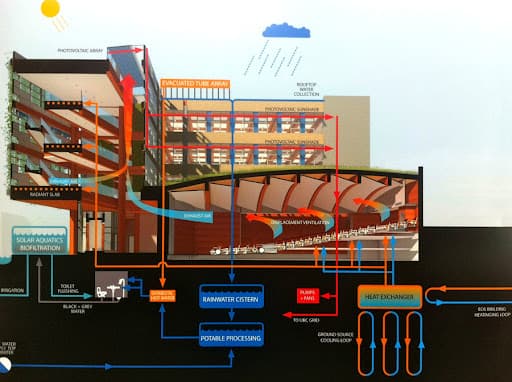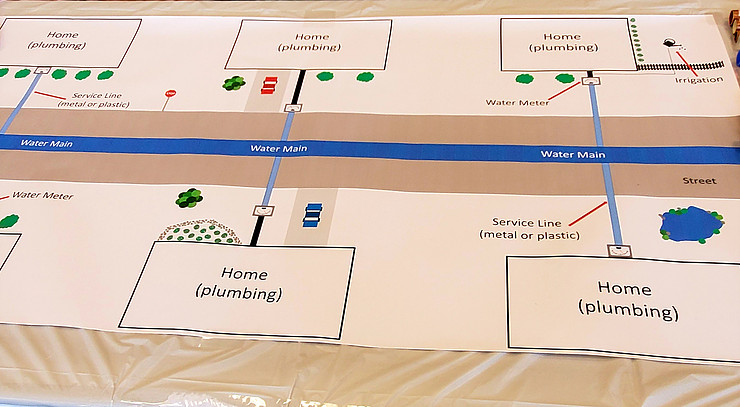Examining Your House's Plumbing System Anatomy
Go ServicesOn this page down the page you might get a lot of good information related to The Inner Workings of Your Home's Plumbing.

Recognizing how your home's plumbing system functions is crucial for every house owner. From supplying clean water for alcohol consumption, food preparation, and bathing to securely removing wastewater, a well-maintained plumbing system is important for your family members's wellness and comfort. In this comprehensive guide, we'll check out the detailed network that makes up your home's plumbing and deal ideas on upkeep, upgrades, and taking care of common issues.
Introduction
Your home's plumbing system is greater than simply a network of pipes; it's an intricate system that guarantees you have access to tidy water and reliable wastewater removal. Recognizing its components and how they collaborate can assist you protect against expensive fixings and guarantee everything runs smoothly.
Fundamental Elements of a Pipes System
Pipes and Tubing
At the heart of your plumbing system are the pipes and tubes that lug water throughout your home. These can be made of numerous materials such as copper, PVC, or PEX, each with its benefits in terms of resilience and cost-effectiveness.
Components: Sinks, Toilets, Showers, and so on.
Fixtures like sinks, toilets, showers, and tubs are where water is utilized in your home. Comprehending exactly how these fixtures link to the pipes system aids in diagnosing problems and preparing upgrades.
Shutoffs and Shut-off Points
Valves manage the circulation of water in your plumbing system. Shut-off valves are important throughout emergency situations or when you need to make repair services, permitting you to isolate parts of the system without interfering with water circulation to the entire residence.
Water Supply System
Main Water Line
The major water line links your home to the local water or a private well. It's where water enters your home and is dispersed to different components.
Water Meter and Pressure Regulatory Authority
The water meter steps your water usage, while a stress regulator makes sure that water moves at a safe stress throughout your home's pipes system, stopping damage to pipelines and components.
Cold Water vs. Warm water Lines
Understanding the difference in between cold water lines, which supply water straight from the main, and warm water lines, which bring warmed water from the water heater, aids in troubleshooting and preparing for upgrades.
Drain System
Drain Water Lines and Traps
Drain pipes lug wastewater away from sinks, showers, and toilets to the sewage system or sewage-disposal tank. Catches prevent drain gases from entering your home and also catch debris that might cause blockages.
Ventilation Pipes
Air flow pipes allow air into the drain system, protecting against suction that might reduce drainage and cause traps to vacant. Proper air flow is important for keeping the stability of your pipes system.
Significance of Correct Water Drainage
Making sure appropriate drainage protects against backups and water damages. Frequently cleansing drains and preserving traps can avoid pricey repair services and extend the life of your pipes system.
Water Heating System
Kinds Of Water Heaters
Water heaters can be tankless or typical tank-style. Tankless heating systems warmth water on demand, while storage tanks save warmed water for instant usage.
Upgrading Your Pipes System
Reasons for Upgrading
Updating to water-efficient components or changing old pipes can enhance water high quality, lower water costs, and raise the value of your home.
Modern Plumbing Technologies and Their Advantages
Explore innovations like wise leakage detectors, water-saving bathrooms, and energy-efficient water heaters that can save money and minimize ecological effect.
Price Considerations and ROI
Determine the in advance prices versus long-lasting financial savings when thinking about pipes upgrades. Many upgrades pay for themselves with minimized utility costs and less repair work.
Just How Water Heaters Link to the Plumbing System
Comprehending just how hot water heater connect to both the cold water supply and hot water distribution lines aids in identifying issues like not enough hot water or leaks.
Upkeep Tips for Water Heaters
Regularly flushing your water heater to eliminate sediment, examining the temperature setups, and examining for leaks can expand its lifespan and enhance energy effectiveness.
Usual Plumbing Concerns
Leakages and Their Causes
Leaks can happen as a result of aging pipelines, loosened fittings, or high water pressure. Dealing with leaks promptly avoids water damages and mold and mildew development.
Clogs and Blockages
Obstructions in drains pipes and commodes are often triggered by purging non-flushable items or an accumulation of grease and hair. Using drainpipe displays and being mindful of what drops your drains can stop clogs.
Indications of Pipes Troubles to Expect
Low water pressure, slow-moving drains pipes, foul odors, or unusually high water expenses are indicators of potential plumbing troubles that must be resolved promptly.
Pipes Upkeep Tips
Normal Inspections and Checks
Schedule annual pipes inspections to catch problems early. Try to find indicators of leakages, deterioration, or mineral buildup in taps and showerheads.
Do It Yourself Maintenance Tasks
Easy jobs like cleansing faucet aerators, checking for bathroom leaks utilizing color tablet computers, or shielding revealed pipelines in cool climates can stop significant plumbing concerns.
When to Call a Professional Plumber
Know when a pipes problem needs professional proficiency. Trying complicated repair work without proper expertise can cause more damages and higher repair service expenses.
Tips for Decreasing Water Usage
Easy behaviors like repairing leakages promptly, taking shorter showers, and running full lots of laundry and meals can save water and reduced your utility expenses.
Eco-Friendly Plumbing Options
Take into consideration sustainable pipes materials like bamboo for flooring, which is durable and green, or recycled glass for counter tops.
Emergency Readiness
Steps to Take During a Plumbing Emergency
Know where your shut-off valves lie and how to turn off the water system in case of a ruptured pipeline or significant leak.
Significance of Having Emergency Get In Touches With Convenient
Maintain get in touch with details for local plumbing technicians or emergency solutions conveniently available for quick action during a pipes dilemma.
Ecological Impact and Preservation
Water-Saving Components and Home Appliances
Installing low-flow taps, showerheads, and toilets can dramatically minimize water usage without compromising performance.
Do It Yourself Emergency Fixes (When Relevant).
Short-lived solutions like utilizing duct tape to patch a leaking pipeline or placing a pail under a leaking faucet can minimize damages up until a professional plumbing technician arrives.
Verdict.
Comprehending the anatomy of your home's pipes system empowers you to keep it successfully, conserving money and time on repairs. By complying with regular upkeep routines and remaining informed concerning contemporary pipes technologies, you can guarantee your pipes system runs effectively for several years to come.
HOW YOUR PLUMBING SYSTEM WORKS
Which Pipes Do What?
Blue lines = fresh water supply entering the building Red lines = hot water supply entering the building Grey lines = pipes carrying waste away from the building and venting pipes carrying gases away from the building (through the roof) YOUR MAIN PLUMBING SYSTEMS
There are two main plumbing systems that support your home s basic plumbing needs one that brings clean water into your home, and one that sends dirty water away from your home. Connected to the toilet, bath, shower, and other faucets in your home, these two systems keep your water flowing in the right directions.
ACCESSING FRESH WATER
Fresh and clean water is brought into your home through the main water supply line . Filtered through one pipe, this water is pressured to flow into the various fixtures in your home at any given time.
This water can be sourced from a well located on your property, a pond or river (mostly cottages), or, as in most cases, from the city s municipal water treatment centre. However, it is important to note that water that is untreated, such as the water siphoned from ponds or rivers, may not be safe to drink. Personal water supplies always need to be treated for hardness and contaminants before consumed.
MUNICIPAL WATER SUPPLIES
Improve taste and odour Remove sediment Eliminate hardness Reduce chlorine COLD WATER SUPPLY VS. HOT WATER SUPPLY
Cold water flows into your home or building through the service line, which then distributes hot or cold water to your fixtures. This line is most commonly run through a central column that runs floor to floor. Hot water runs in short and straight pipes as the longer the pipeline, the more heat that will be lost in the transfer. Having shorter pipes also allows residents to access hot water more quickly.
WASTE WATER SYSTEM
Your wastewater system is divided into two parts pipes that send wastewater away from your home and venting pipes that send sewer gas away from your home. Sewage water travels through pipes that flush the water and waste towards local sewers that are operated and managed by your city or town. Most sewer systems rely on gravity to move the wastewater to where it needs to go.
The further away from your toilet or sink, the larger wastewater pipes become. This allows for waste to be disposed of from various parts of your home or business at once without pipe blockages. The angle and flow of these pipes are also essential for keeping your waste pipes clear of build up.
https://harrisplumbing.ca/how-your-home-plumbing-system-works/

I was made aware of that editorial about Plumbing Installation 101: All You Need to Know through a friend on a different web blog. Do you know about another individual who is intrigued by the topic? Do not hesitate to promote it. Thanks for your time invested reading it.
Click Here!